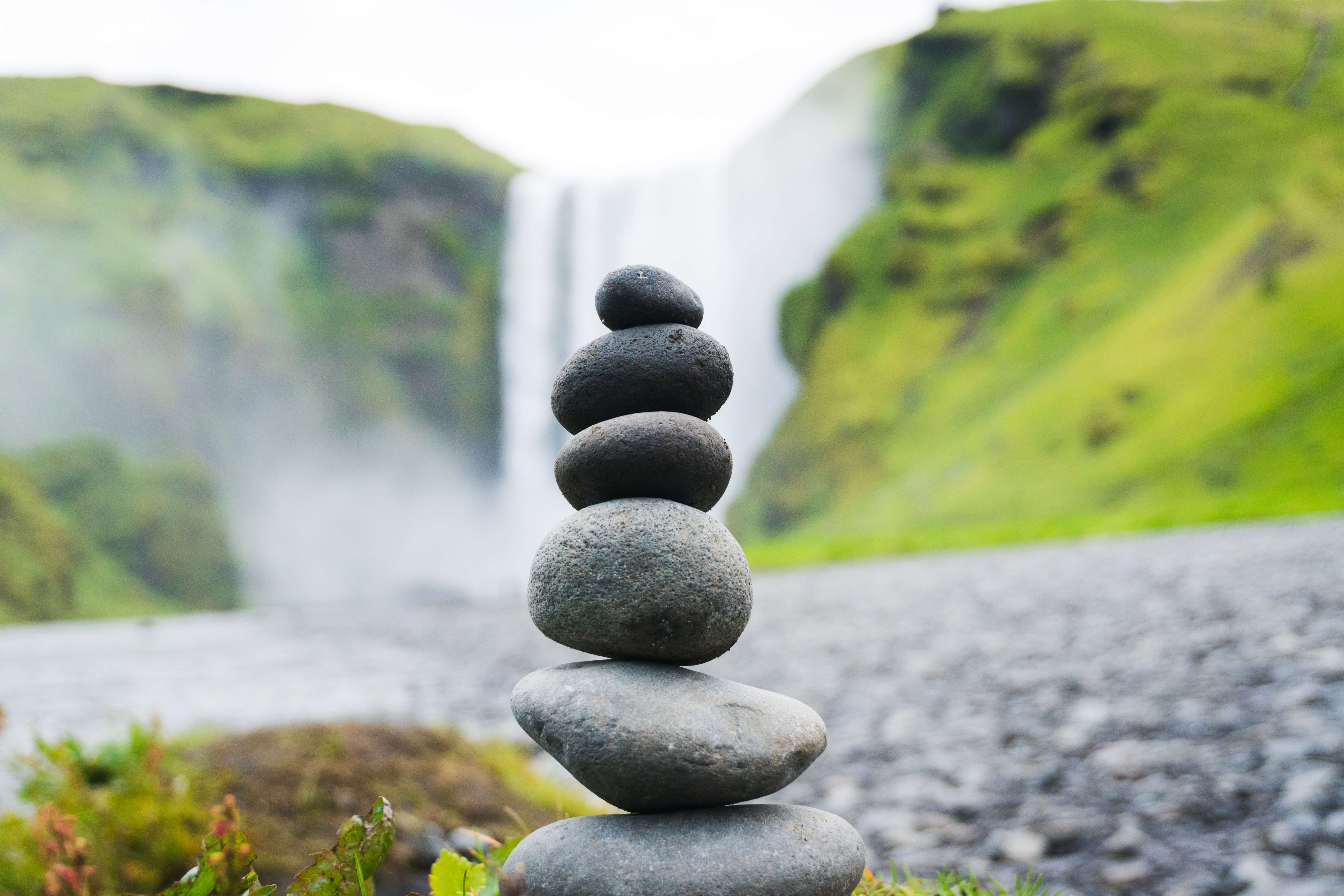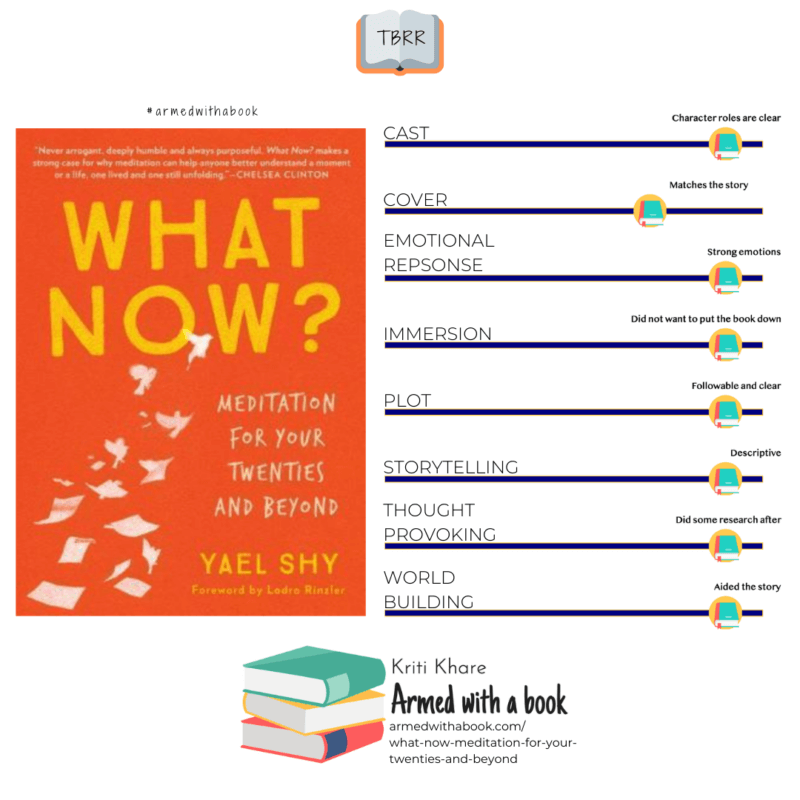Last year, this time, I was preparing for my last term in my teaching degree. I had dabbled with Meddy Teddy in my prior placement and learning about mindfulness and how it can be an asset to education had peaked my interest a lot. That’s when I found this book and hoped to read it to find strategies to become more mindful. However, with me not going into teaching and choosing to pursue other passions, this book took a bit of a backseat.
When I was looking for a read that would give me some new things to ponder about life, this one spoke to me from my bookshelf. I picked it up and I was not disappointed at all. As someone in mid-twenties, this is exactly what I needed.

Buddhist teachings and meditation offer a roadmap to help college students and others in early adulthood incorporate mindfulness into their lives as a means of facing the myriad struggles unique to this stage of life.
So much of what marks early adulthood is intense emotions and insecurity. What if you never fall in love? What if you can’t find a job you like? You miss home. You have no home. Are you having enough sex? Are you having too much sex? You’re lonely all the time. Your relationships with your friends are complicated.
What Now? shares mindfulness practices to help twenty somethings learn to identify and accept these feelings and respond–not react–to painful and powerful stimuli without pushing them away or getting lost in them. This is not about fixing oneself or being -better.- Readers are encouraged to embrace themselves exactly as they are. You are already completely whole, completely loveable, completely worthy. What Now? shares practices that help us to wake up to this fact.
This uniquely tumultuous developmental period is a time when many first live away from home and engage in all kinds of experimentation–with ideas, substances, relationships, and who we think we are and want to be in the world. Yael Shy shares her own story, and offers basic meditation guides to beginning a practice. She explores the Buddhist framework for what causes suffering, and explores ideas about interconnection and social justice as natural outgrowths of meditation practice.
Why I chose to read What Now?: Meditation for Your Twenties and Beyond
I will be honest, like many people, I have tired and sucked at meditation. I love the idea of mindfulness though and considering that this book targets my age group, I picked it up to learn something new. I was hoping Yael would be able to share her experiences and guide me. I have read books related to mindfulness before and feverishly highlighted Jon Kabat-Zinn’s Whenever you go, there you are, and one of my biggest takeaways from that was that meditation happens when we are ready for it.
When I saw this book on my shelf last week, I was ready to learn more from What Now?, and really open myself up to what Yael had to say. Sticky notes, pen and highlighter in hand, I read with intention. 🙂

Themes for Thought
We live in a world where social media gives the impression that life is amazing. Think about all the things that you post on it and the image of yourself that you consciously or unconsciously project. In a time like this, what we need the most are honest conversations. Truths about mistakes that we have made so that others might be able to learn from them or admit their own mistakes and not feel so alone. I am not saying we should post every problem we face on social media, I am just saying that sometimes, we need one person, or one book, to let us admit the dark secrets we hide and share their dark secrets in return.
Yael’s What Now? was this fantastic book for me. Many of the stories that Yael shares from her life, her twenties in particular about holding on to anger, about taking on more and more work, knowing it would not have worked out, delaying conversations, among other things, are situations I have personally experienced in some form. Knowing that it happened to her too made me feel so much better. Some of them might feel like shameful things to share but not all parts of life are shiny.
Feelings emotions, not being emotions
One of my biggest lessons from this book would be what emotions really are. Yael goes into details about fear, anger, desire and forgiveness in one of the chapters of What Now? Each section made me think about how I have experienced, or sometimes suppressed, what I was feeling. She shared the RAIN technique which stands for Recognize, Accept, Inquire, Nourish – a form of meditation to feel emotions, rather than be consumed by them. I also learned this beautiful way of describing suffering, which I will always remember:
Suffering is optional. Suffering is when we take a second arrow and shoot it at ourselves, after being pierced by the first. Suffering is fighting the pain through resistance and struggle.
I had never thought of suffering this way, but looking back at the times in my life when I have suffered, I can see how much of my suffering came from being consumed by emotions and letting them take over.
My favorite lesson though from emotions was related to forgiveness. I did not realize until I read Yael’s book how many layers of forgiveness there are. For some mistakes and situations, we have to forgive other people, but often, we also have to forgive ourselves. How many times have I kicked myself for doing something stupid? It is ok. I make mistakes too. I wish I had told myself that more than I did.

On Diversity
I was not expecting Yael to talk about diversity in this book. When touching upon mindful sex and social justice, she took the opportunity to talk about diversity. Mindfulness lets us know ourselves better, lets us dive into our deepest feelings and heal ourselves from the hurt we hold on it for long times. When we come to a relationship or a new situation, we never come to it without context – we always bring with us our prior experiences, sometimes, not even realizing how deep some cuts are, or worse, that they exist. And until we feel better, we can’t help the world get better.
I’ve been watching Sex Education on Netflix and really enjoying the insights about the sex education curriculum taught in schools and how it alienates parts of the society, not considering the questions that LGBTQ+ community kids might have. I was part of a Gay Straight Alliance (GSA) during my second placement in teaching and loved the warm and safe place that I had with a small group of kids. We sometimes focused on tough conversations about coming out and, as a teacher, I hoped that with a supporting community, these kids would be able to ask questions that they would shy away from in an integrated classroom.
There is so much more I want to say about this book! There are so many thought provoking ideas and discussion points here that I could probably write a novella about it. 🙂 There are stories from Zen teachings, of Buddha, teachings of other teachers and much more! But most importantly, there are experiences in this book that you will relate to.
This is probably the only book that I have ever annotated with sticky notes to this extent. I highly recommend it to everyone who is in their 20s and beyond.
Even if you are not interested in mindfulness and meditation, read it to think about the things that you would not admit it to others out aloud, to learn what fear and anxiety it, and to go on a journey to know yourself better.
** What Now?: Meditation for Your Twenties and Beyond is now out in stores so get a copy and let me know what you think! It is definitely on my reread list. **
Amazon Print
Amazon Kindle

Cover image by Martin Sanchez on Unsplash

Definitely want to pick up a copy of this now.
Thanks! It was absolutely amazing! 🙂